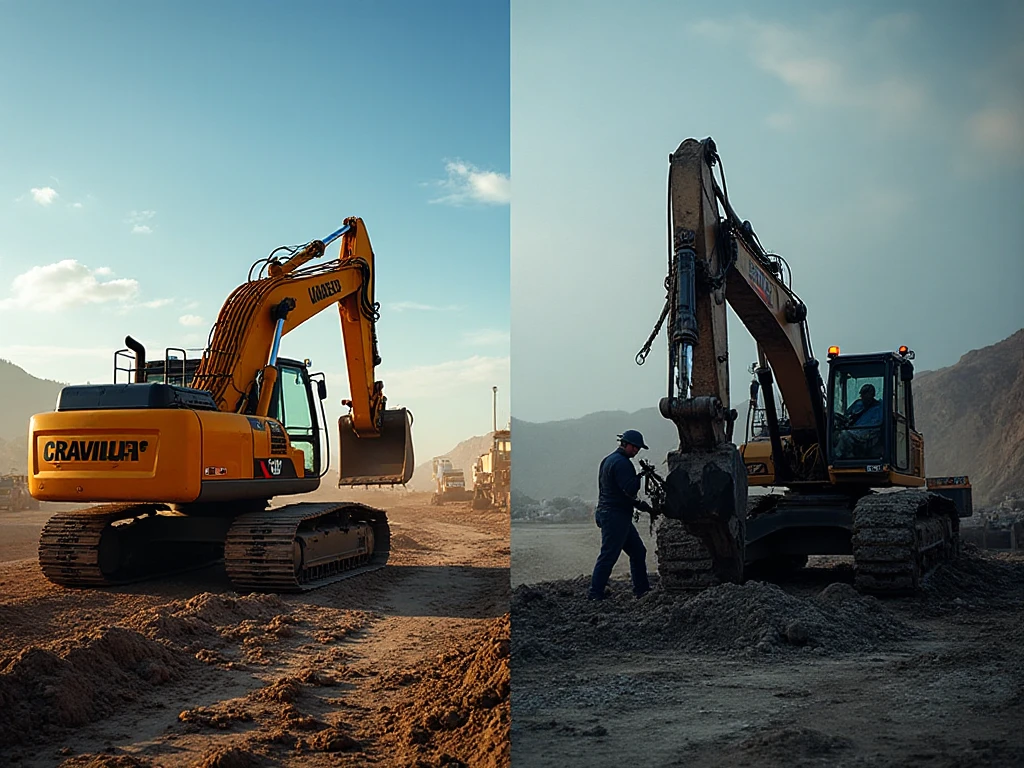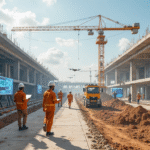Proactive Equipment Care: Preventative Maintenance vs Reactive Maintenance in Construction Explained
In the fast-paced world of construction, the difference between smooth operations and costly delays often comes down to one critical factor: how you maintain your machinery. Understanding preventative maintenance vs reactive maintenance isn’t just about keeping equipment running; it’s about building reliability, reducing costs, and extending the lifespan of your most valuable assets.
Why Equipment Maintenance Defines Construction Success
Construction projects thrive on precision, timing, and performance. Every piece of heavy equipment, from excavators and graders to cranes and loaders, plays a vital role in meeting project deadlines. Yet, when machines fail unexpectedly, progress halts, costs rise, and timelines stretch.
This is where construction equipment maintenance strategies come into play. Whether you’re managing a small fleet or overseeing a large-scale infrastructure project, understanding preventative maintenance vs reactive maintenance can mean the difference between profitability and costly downtime.
Today’s top-performing construction companies are shifting toward proactive maintenance planning, driven by data, technology, and operational discipline. Let’s explore why.

Understanding Preventative vs Reactive Maintenance in Construction
For any construction company, the difference between preventative maintenance vs reactive maintenance can determine whether projects run smoothly or come to a costly halt. Maintenance isn’t just a support function; it’s a strategic tool for improving productivity, safety, and asset longevity. To build sustainable, cost-efficient operations, construction firms must shift their focus from short-term fixes to long-term reliability.
What Is Preventative Maintenance?
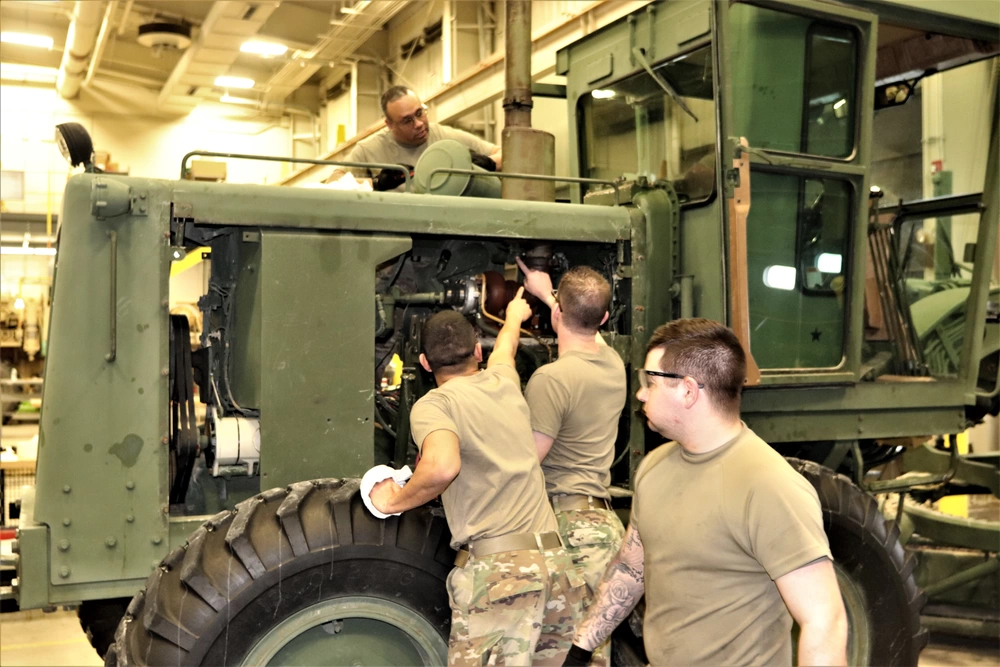
Preventative Maintenance (PM), also known as “Preventive Maintenance”, is a proactive, planned approach to equipment upkeep. It involves scheduled inspections, lubrication, part replacements, and performance tests designed to prevent unplanned failures. This approach relies heavily on data, equipment manuals, and performance logs to ensure machines are serviced before breakdowns occur.
In construction equipment maintenance, preventative programs include periodic oil sampling, hydraulic filter changes, tyre inspections, and engine performance analysis. For example, maintaining a regular schedule for changing hydraulic oil in excavators or graders prevents contamination and prolongs the lifespan of internal components such as seals, pumps, and control valves.
For maintenance engineers, the advantage lies in predictability; knowing when a piece of equipment needs service allows for better resource allocation, fewer disruptions, and higher operational efficiency.
What Is Reactive Maintenance?
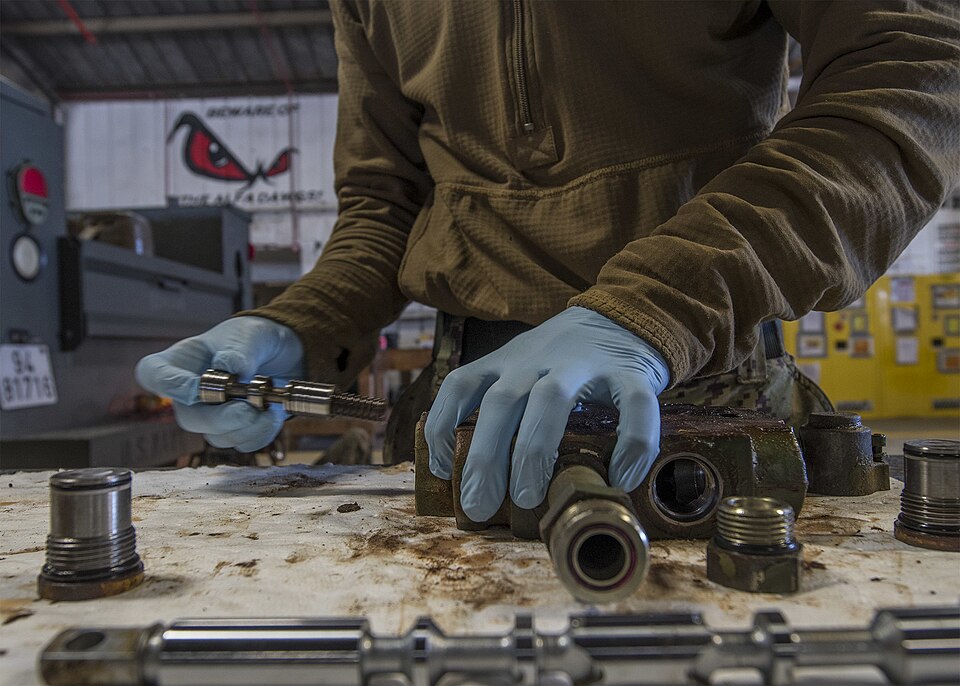
Reactive Maintenance (RM), often referred to as “run-to-failure” maintenance, is the opposite. Here, no action is taken until the machine fails. Only after a breakdown does the maintenance team step in to diagnose and repair the fault. While it can appear cost-saving in the short term, this reactive maintenance approach often results in higher repair costs, safety risks, and prolonged downtime.
In real-world construction settings, a backhoe breaking down in the middle of a foundation job or a crane halting mid-operation can delay entire project timelines. Such breakdowns force teams to rent replacements or pay emergency service rates; costs that could have been avoided through preventative maintenance planning.
In essence, the difference between preventative and reactive maintenance in construction lies in control: one anticipates problems before they happen, while the other reacts after damage is done.
Key Differences Between Preventative and Reactive Maintenance
| Aspect | Preventative Maintenance | Reactive Maintenance |
| Approach | Planned and proactive | Unplanned and corrective |
| Goal | Prevent equipment failure | Repair after breakdown |
| Cost Control | Predictable and budgeted | Unpredictable and costly |
| Downtime | Minimal and scheduled | High and unplanned |
| Equipment Lifespan | Extended lifespan | Shortened due to stress and wear |
| Data Utilisation | Relies on analytics and monitoring | Minimal or none |
| Safety Level | High – proactive risk control | Lower – reactive response |
| Ideal For | Critical or high-use equipment | Non-critical or backup assets |
For project managers and maintenance engineers, this table underscores why preventative maintenance strategies are essential for sustainable operations, especially in projects with tight schedules or where machinery downtime leads to major cost overruns.
The Benefits of Preventative Maintenance for Construction Equipment
The best way to reduce machine downtime and equipment breakdowns is to combine preventative and predictive maintenance practices within a culture of discipline and accountability. Now, let’s explore some of the benefits achievable when maintenance engineers and operators collaborate in proper maintenance of construction equipment.

1. Reduced Equipment Downtime
Preventative maintenance ensures machines stay operational longer and with fewer interruptions. By catching minor faults, like worn belts, loose bolts, or oil leaks, before they worsen, engineers minimise the risk of catastrophic failures. For construction project managers, this directly translates to improved productivity and project reliability.
2. Long-Term Cost Efficiency
Although preventive maintenance involves scheduled service costs, it saves money in the long run. Studies across heavy industries show that every $1 spent on preventative maintenance can save up to $5 in future repair or replacement costs. Creating a proper maintenance planning system that tracks these savings helps companies justify the initial investment.
3. Enhanced Safety and Compliance
Malfunctioning machinery poses serious safety hazards. Preventative maintenance ensures compliance with occupational safety standards and minimises risks to operators and nearby workers. Well-maintained braking systems, hydraulics, and control panels prevent incidents that could otherwise result in injuries or fatalities.
4. Extended Equipment Lifespan
Regular servicing slows down wear and tear, preserving engine efficiency, hydraulic pressure, and mechanical performance. This approach leads to greater asset utilisation, reducing capital expenditure on new machines.
5. Data-Driven Maintenance Decisions
Today’s equipment management strategies increasingly rely on IoT sensors, telematics, and AI analytics. Predictive models use data from vibration sensors, oil samples, and temperature readings to forecast failures before they happen. Maintenance teams can then act with precision, thus preventing unplanned downtime and ensuring higher operational resilience.
The Risks of Relying on Reactive Maintenance
While reactive maintenance may appear flexible, it introduces serious risks in modern construction operations.
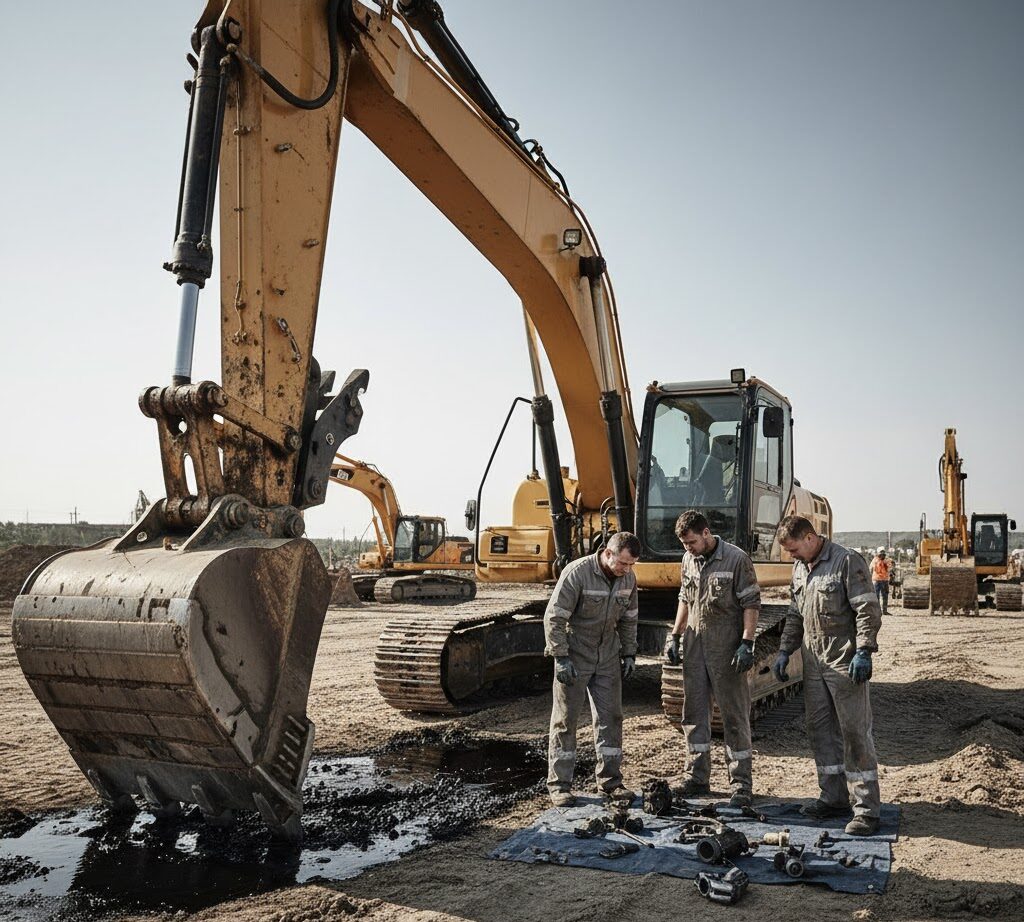
1. Uncontrolled Costs
Breakdowns often require emergency labour, overnight shipping of parts, and machinery rentals. These costs far exceed the predictable expenses of scheduled maintenance.
2. Project Delays and Productivity Losses
When critical machines, such as bulldozers, excavators, or tower cranes, fail, entire project sequences stall. Such disruptions create cascading effects, idle workers, missed milestones, and strained client relationships.
3. Accelerated Equipment Wear
Running equipment to the point of failure often damages adjacent systems. A failed bearing can destroy shafts and housings, while overheating can warp engine blocks, causing secondary damage that multiplies repair costs.
4. Safety and Reputational Risks
Unexpected mechanical failures on-site not only endanger lives but also harm a company’s professional reputation. In regulated markets, recurring safety issues can lead to penalties or disqualification from future tenders.
Read Further: Revolutionary Predictive Maintenance Using AI of Public Infrastructure: Enhancing Efficiency and Reliability
For construction companies, these risks demonstrate why transitioning from reactive to preventative maintenance is not optional; it’s a strategic imperative.
Maintenance Planning for Construction Companies
A practical maintenance planning framework is the backbone of a high-performing construction business. It combines engineering expertise, data analytics, and process discipline to ensure every asset operates at peak efficiency.

Key Steps to Building a Maintenance Plan
- Asset Inventory and Classification: Maintain a detailed database of all equipment, including service histories, operational hours, and manufacturer recommendations.
- Maintenance Scheduling: Base intervals on usage intensity, environmental conditions, and OEM specifications. For example, a machine used in dusty environments may require more frequent filter changes.
- Condition Monitoring: Utilise telematics and diagnostic sensors to track temperature, vibration, and fluid quality in real time.
- Work Order Management: Use Computerised Maintenance Management Systems (CMMS) to automate work orders, track technician performance, and generate service reports.
- Feedback and Continuous Improvement: Regularly review KPIs such as Mean Time Between Failures (MTBF) and Mean Time to Repair (MTTR). Use this data to refine future maintenance plans.
For maintenance engineers and construction site managers, this structured approach transforms maintenance from a reactive cost centre into a strategic asset management system.
Best Maintenance Practices for Heavy Machinery
Modern construction operations depend heavily on well-structured heavy machinery maintenance programs designed to extend equipment lifespan, minimise breakdowns, and improve project efficiency. Leading engineering firms now blend preventative maintenance vs reactive maintenance principles with data-driven technologies to achieve operational excellence.
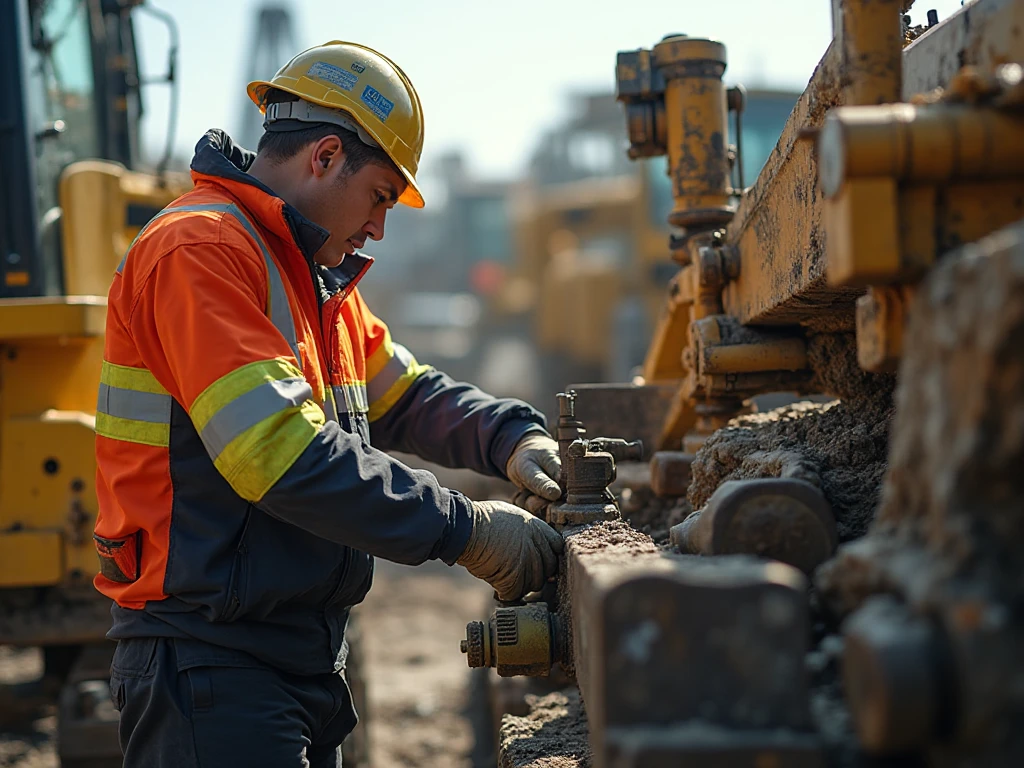
1. Daily Pre-Operation Inspections
Routine checks before each shift form the foundation of effective construction equipment maintenance. Operators should inspect for oil or hydraulic leaks, abnormal vibrations, unusual sounds, and tyre or track wear. Early detection prevents minor faults from escalating into costly downtime and aligns with equipment management strategies used in top-tier construction projects.
2. Proper Lubrication Scheduling
Adhering to precise lubrication intervals ensures smooth operation of moving components such as pins, bearings, and hydraulic actuators. Over-lubrication can attract dust, while under-lubrication leads to friction and overheating. Integrating lubrication schedules into maintenance planning for construction companies improves both performance and safety.
3. Standardisation of Components
Many large contractors now undertake construction equipment brand-matching, whereby they standardise filters, hoses, and fittings across machine brands to simplify parts procurement. This practice reduces inventory overhead, accelerates repairs, and supports reducing downtime in construction projects by ensuring critical components are always available.
4. Technical Training and Awareness
Well-trained maintenance personnel form the backbone of heavy machinery maintenance. Continuous professional development programs enhance technicians’ diagnostic accuracy, enabling them to identify potential problems before they affect operations. This also improves compliance with OEM guidelines and safety standards across job sites.
5. Integration of Predictive Analytics
The future of equipment management strategies lies in the use of predictive analytics and smart infrastructure monitoring, by analysing sensor data, such as vibration, pressure, and temperature. AI models forecast failures and recommend service actions at the optimal time. This transition from time-based to condition-based servicing represents a key advancement in AI infrastructure maintenance.
These equipment management strategies create operational resilience, reduce maintenance costs, and support sustainability through lower resource wastage.
How to Reduce Equipment Breakdowns in Construction
Reducing equipment breakdowns in construction requires more than quick fixes; it calls for data-driven equipment management strategies, disciplined maintenance planning, and a proactive culture among operators and engineers.
Most failures in heavy machinery maintenance result from three causes: mechanical wear, operator misuse, or poor follow-up. Below are key measures construction companies can adopt to minimise downtime and improve fleet reliability.

1. Embrace Digital Maintenance Tracking
Modern maintenance planning for construction companies relies on Computerised Maintenance Management Systems (CMMS) and telematics tools. These systems track service intervals, record performance data, and issue alerts when faults or wear indicators arise. Integrating GPS-based tracking and diagnostics helps teams schedule maintenance before failures occur, reducing unplanned downtime and repair costs.
2. Build a Reporting Culture
Operators are the frontline of construction equipment maintenance. Encouraging them to report abnormal sounds, leaks, or power fluctuations allows early detection of issues. Rewarding proactive reporting transforms teams from reactive responders into preventative problem-solvers.
3. Balance Equipment Use
Overusing specific machines while others sit idle accelerates wear. Construction equipment, such as excavators, graders, and loaders, across job sites ensures a balanced workload distribution, extending the lifespan of all units and stabilising overall productivity.
4. Track Preventative vs Reactive Maintenance
A healthy operation maintains roughly 75% preventative maintenance vs reactive maintenance. Monitoring Key Performance Indicators (KPIs), such as downtime rates, mean time between failures (MTBF), and maintenance costs per hour, helps teams identify recurring issues and plan more effective service schedules.
5. Adopt Predictive and Smart Monitoring Tools
Predictive technologies, such as IoT sensors, oil analysis, and vibration diagnostics, detect hidden issues long before they lead to failure. These AI-powered maintenance solutions enable technicians to plan component replacements during scheduled breaks, preventing project delays.
6. Maintain Proper Lubrication and Cleanliness
Simple habits, such as consistent greasing, oil filtration, and filter cleaning, can prevent up to 40% of failures in heavy machinery maintenance. Dust, water, and heat are silent destroyers of machine reliability, making regular lubrication a frontline defence.
7. Train and Certify Maintenance Personnel
Well-trained technicians understand modern systems, accurately interpret diagnostics, and effectively apply data-driven maintenance systems. Partnering with OEMs or certified trainers enhances both safety and performance.
8. Integrate Maintenance into Project Schedules
Linking maintenance planning for construction companies with project timelines ensures service windows don’t clash with critical operations. Planned downtime minimises disruptions while protecting asset health.
Further reading: Why You Should Invest in Construction Machinery and Equipment
The Strategic Importance of Proactive Maintenance
In the long run, preventative maintenance vs reactive maintenance defines the maturity and resilience of a construction company. Preventative maintenance is not merely about servicing; it’s about foresight, safety, and performance optimisation.
Proactive firms experience fewer disruptions, stronger client satisfaction, and lower lifecycle costs. As construction equipment becomes increasingly digital, adopting predictive and preventative maintenance strategies will be essential for companies aiming to remain competitive and sustainable in the years ahead.

Conclusion: Building Reliability Through Smart Maintenance
As construction technologies evolve, the demand for uptime and reliability continues to grow. Understanding preventative maintenance vs reactive maintenance allows companies to transition from crisis management to operational excellence.
Preventative strategies not only extend equipment lifespan but also strengthen safety, efficiency, and profitability, core pillars of modern engineering success. When construction companies invest in proactive care, they’re not just maintaining machines; they’re safeguarding their future.
Building Smart: Stay Ahead with ConstructionFrontier.com
At ConstructionFrontier.com, we spotlight innovations that redefine construction, from AI-driven maintenance planning to digital equipment monitoring. Stay informed, sharpen your competitive edge, and explore how proactive strategies are shaping the next era of construction excellence.

